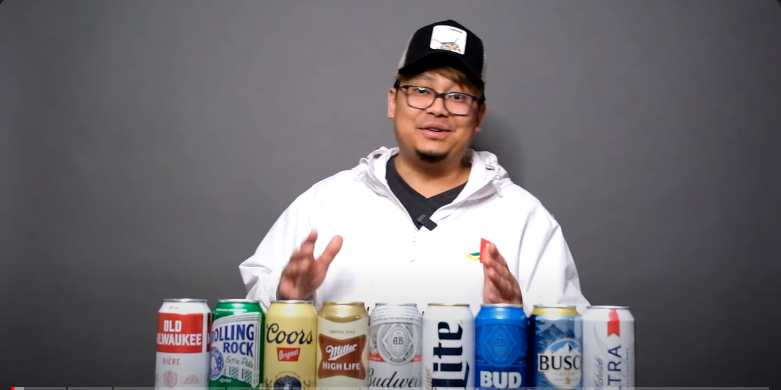Beer has been a staple of American culture for generations, symbolizing camaraderie, tradition, and simple pleasures. However, recent data from Beer Marketer’s Insights indicates a significant shift in drinking habits, with beer consumption hitting its lowest point in the U.S. in decades. As we delve into this downturn.

The American Landscape of Beer Drinking is Changing
Beer, particularly domestic premium brands like Bud Light, Miller Light, and Coors Light, have historically dominated American bars, tailgate parties, and refrigerators. Yet in an unprecedented turn of events, the beer industry has seen a steady decrease in demand.
Diverse Factors Contributing to Decline
The situation is not rooted in a single issue but stems from a multifaceted change in consumer behavior and market dynamics. First, there’s the increasing competition from non-traditional alcoholic beverages introduced by global soft drink and energy giants that cater to a sweet tooth. Moreover, the hard seltzer market, once booming and dominated by behemoths like Anheuser Busch, has started to suffer from its own success with signs of saturation.
Secondly, the health and wellness trend continues to gain momentum, with many Americans opting for lower-calorie, lower-alcohol, or non-alcoholic alternatives. The preferences of millennials and Gen Z consumers, who are more health-conscious and financially cautious, energize this shift away from conventional beers.
Beyond Boycotts and Brand Preferences
An intriguing case study can be seen with Bud Light, which faced a consumer boycott over a sponsorship deal involving a transgender influencer. While significant for the brand, this incident is symptomatic of a broader trend rather than the sole cause of the decline. Established brands are not only facing cultural headwinds but are also encumbered by a consumer base that is diversifying its taste. More expensive and imported beer brands, like Modelo Especial, have observed increased loyalty, indicating a willingness among beer drinkers to pursue quality over quantity.
Meanwhile, the craft beer movement, once seen as the rejuvenating force in the beer industry, has matured to a point where differentiation is challenging. The profusion of choices may have backfired, leaving consumers feeling overwhelmed rather than enticed.
Economic Forces at Play
Despite falling volumes, large beer makers remain financially strong due to strategic pricing, which in several cases has outpaced broad inflation. Higher prices tied to premium brands and imports have bolstered dollar sales and, consequently, profit margins for big beer companies. However, this doesn’t discount the long-term sustainability concerns for an industry wrestling with consumer drift and oversaturation.
Macro and Microeconomic Trends
At the macroeconomic level, the alcohol market reflects broader economic conditions. An expanding economy boasting job creation and wage gains might prompt more consumer spending, but paradoxically, this has not necessarily favored traditional beer. Microeconomic forces tell a tale of market adaptation as consumers seek novelty and customization in their drinking experience.
The Global Picture Versus Local Dynamics
Internationally, the story is different. In many parts of the world, beer sales are vigorous, showing that the decline is a predominantly American phenomenon. It’s plausible to attribute this to cultural and regional drinking habits, economic factors, and market maturity.
How is it, then, that the U.S., with its rich tradition of brewing and beer consumption, finds itself in this predicament? The reasons are within and without the industry. On the one hand, domestic brewers face a challenge in reinventing their products to align with evolving tastes and expectations. On the other hand, external factors like legislation on alcohol advertising, changing demographics, and even the movement toward cannabis legalization play a role.
The Beer Industry at a Crossroads
The decline in American beer consumption narrates not just a change in a beverage’s fortune but hints at societal shifts in lifestyle, consumption, and health.
Navigating Through a Transforming Landscape
For the beer industry to recover or stabilize, it must acknowledge and adapt to these shifts. Embracing innovation in product development, diversifying offerings to include low-alcohol or alcohol-free alternatives, and engaging with the new consumer ethos around sustainability and social responsibility are becoming non-negotiable.
Industry Response and Future Directions
Some brewers are experimenting with craft non-alcoholic beers and hop-infused sparkling waters, tapping into the ‘sober curious’ trend. Others are adopting environmentally friendly brewing practices and aligning themselves with socially responsible causes to resonate with a more value-driven clientele.
The Future of Beer in America
Though the immediate future appears challenging, the beer industry can look back at its resilience and capacity for reinvention as blueprints for navigating current headwinds. The realignment of business strategies to meet the contemporary consumer halfway, if not all the way, has become an industry imperative.
In conclusion, the decline in beer consumption is not just a blip but a signal of transformative changes in American tastes, preferences, and lifestyles. The industry, while enduring the headwinds of change, stands poised to evolve and cater to a new generation of drinkers, embodying resilience and adaptability. As it stands, the once overflowing mug of American beer culture may be less full, but it’s far from empty, leaving room for innovation, growth, and perhaps, a new era in brewing history.

Comments
Post a Comment